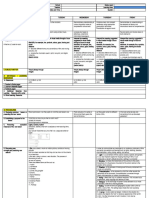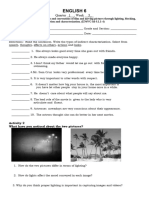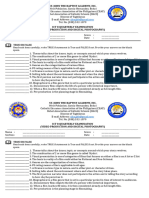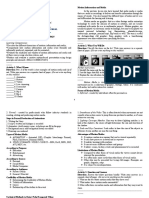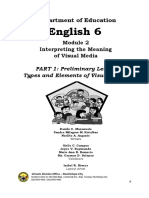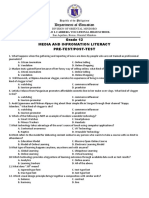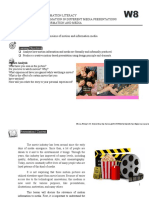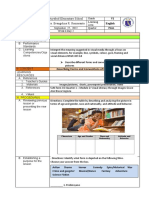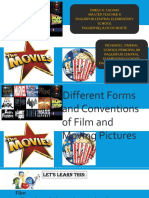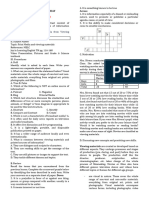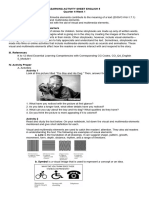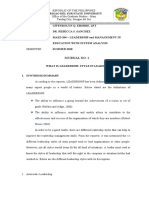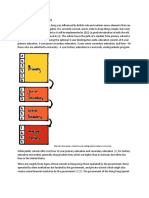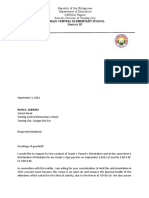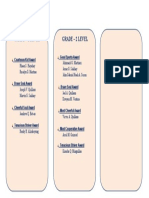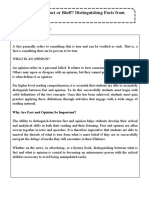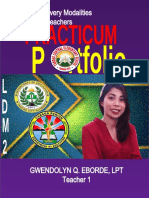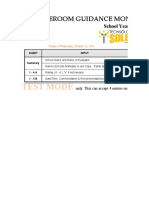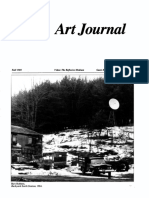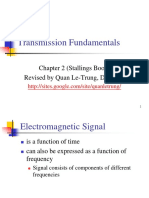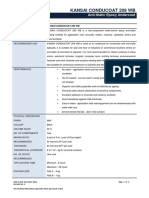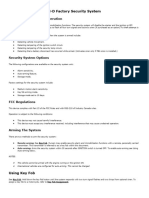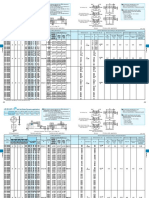0% found this document useful (0 votes)
11 views8 pagesSummative Test English6 Module2
This document is a summative test for English 6, covering various aspects of film and visual media through multiple-choice questions, fill-in-the-blank exercises, and a simple essay. It assesses students' understanding of film conventions, types of visual media, and their importance in learning. The test includes an answer key for evaluation.
Uploaded by
Newgleer WengCopyright
© © All Rights Reserved
We take content rights seriously. If you suspect this is your content, claim it here.
Available Formats
Download as DOCX, PDF, TXT or read online on Scribd
0% found this document useful (0 votes)
11 views8 pagesSummative Test English6 Module2
This document is a summative test for English 6, covering various aspects of film and visual media through multiple-choice questions, fill-in-the-blank exercises, and a simple essay. It assesses students' understanding of film conventions, types of visual media, and their importance in learning. The test includes an answer key for evaluation.
Uploaded by
Newgleer WengCopyright
© © All Rights Reserved
We take content rights seriously. If you suspect this is your content, claim it here.
Available Formats
Download as DOCX, PDF, TXT or read online on Scribd
/ 8












